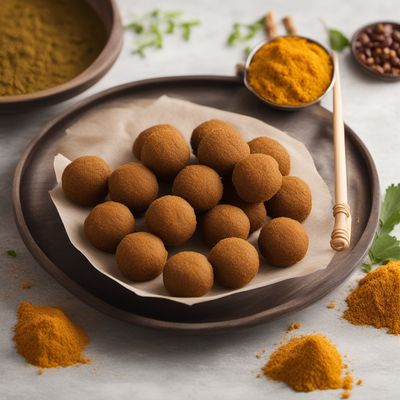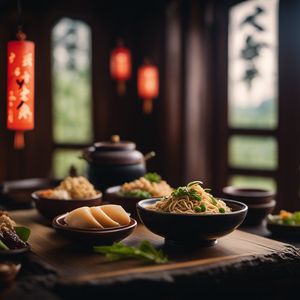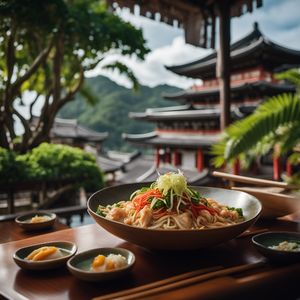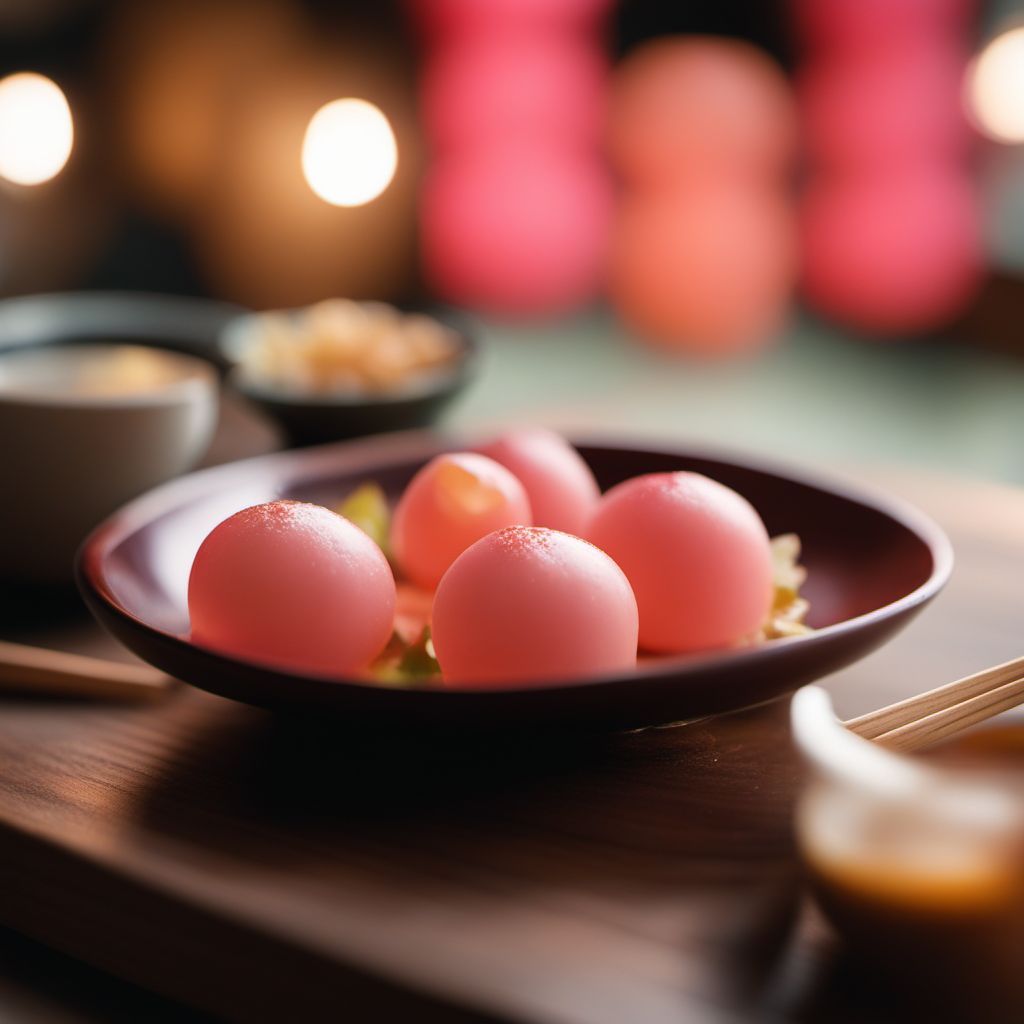
Dish
Dango
Dango is made from mochiko, a type of glutinous rice flour, which is mixed with water to form a dough. The dough is then divided into small balls and boiled until they float to the surface. The cooked dango is then skewered and served with sweet sauces such as anko (sweet red bean paste), kinako (roasted soybean flour), or mitarashi (sweet soy sauce). Dango can be enjoyed as a snack or dessert, and is often served during festivals and special occasions in Japan.
Origins and history
Dango has been a popular snack in Japan since the Edo period (1603-1868), and is often associated with the cherry blossom season. It is said that dango was originally made as an offering to the gods during the spring equinox and later became a popular snack among the general population. Today, dango is enjoyed throughout the year and is available in many different flavors and varieties.
Dietary considerations
Dango is gluten-free and vegan-friendly. However, some sauces and toppings may contain dairy or animal products. It is also high in carbohydrates and calories, so it should be consumed in moderation as part of a balanced diet.
Variations
There are many variations of dango, including different flavors and colors. Some popular variations include yomogi dango (made with mugwort), kurogoma dango (made with black sesame), and hanami dango (colored pink, white, and green to represent cherry blossoms).
Presentation and garnishing
To make dango, it is important to use the right type of rice flour (mochiko) and to knead the dough until it is smooth and elastic. The cooking time is also important, as overcooked dango can become tough and chewy. When serving dango, it is important to use fresh and high-quality ingredients for the sauces and toppings. Dango is often served on skewers, with three to five dango per skewer. It can be garnished with various toppings such as sesame seeds, chopped nuts, or fruit. The presentation should be simple and elegant, with the focus on the texture and flavor of the dango itself.
Tips & Tricks
When making dango, it is important to use a non-stick pot to prevent the dango from sticking to the bottom. It is also important to keep the water at a gentle boil to prevent the dango from breaking apart. To add flavor to the dango, you can mix in ingredients such as matcha powder or cocoa powder to the dough before boiling.
Side-dishes
Dango can be served on its own as a snack or dessert, or as part of a larger meal. It pairs well with green tea or other Japanese teas.
Drink pairings
Dango is often served with green tea or other Japanese teas.
Delicious Dango recipes
More dishes from this category... Browse all »

Aamras
Indian cuisine
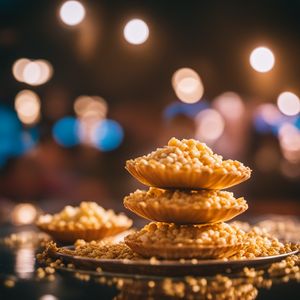
Aasmi
Indian cuisine

Agra petha
Indian cuisine

Aiyùbīng
Taiwanese cuisine

Ajdnek
Slovenian cuisine
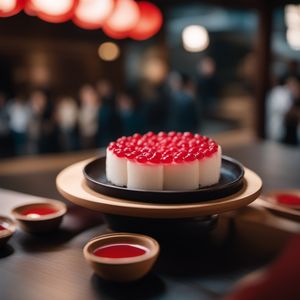
Akafuku
Japanese cuisine

Akanés
Greek cuisine

Akumaki
Japanese cuisine

